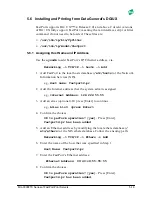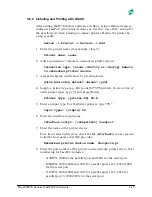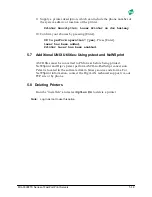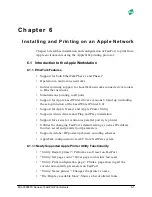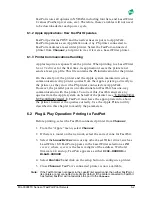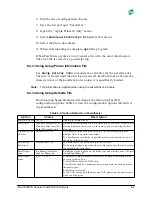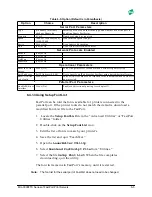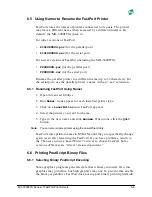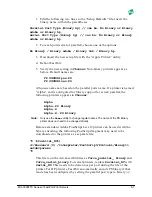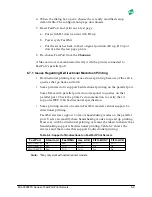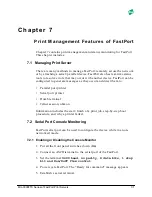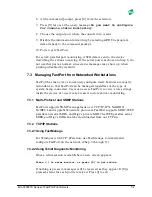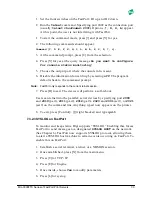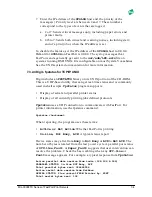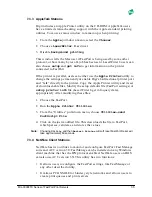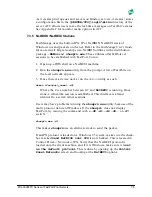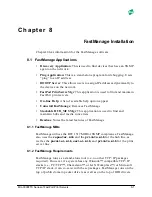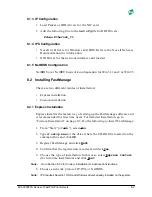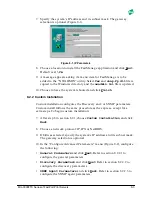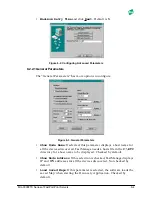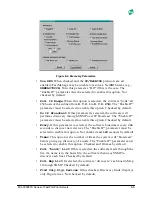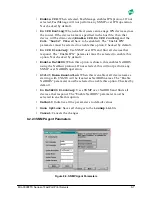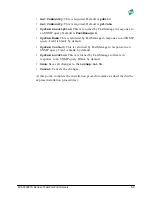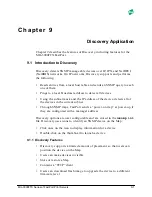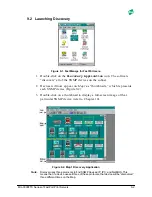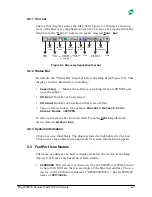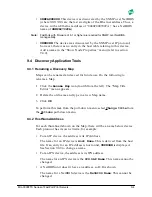
MIL-3000FTX Series of FastPort Print Servers
7-3
1. Set the front switches on the FastPort: D1 up and D2 down.
2. Run the
telnet
command. Specifying port 2002 as the connection port
(usually:
telnet <
hostname> 200
2)
. Options
(!, D, S, A
) appear.
At this point, the user is not interfering with FastPort.
1. To start the command mode, press [!] and press [Y] for yes.
2. The following commands should appear:
Command [C, D, E, F, G, H, I, L, N, R, P, S, Z, *, +]:
3. At the command prompt, press [C] from the selection.
4. Press [Y] for yes at the query message
Do you want to configure
for console status monitoring
?
5. Choose the output port where the console info. is sent.
6. Disable the information forwarding by selecting
off
. The program
defaults back to the command prompt.
Note:
FastPort only responds to the current telnet session.
7. Press [R] to exit. The device will perform a soft-reboot.
Users can telnet into the parallel/serial devices by specifying port
2000
and
2010
(par1),
2011
(par2),
2012
(par3),
2020
and
2001
(ser1), or
2021
(ser2) on the command line. Anything typed now appears on the printer.
8. To exit, press [C []] (right bracket) and type
quit
.
7.3.2.3SYSLOG on FastPort
To monitor and keep status, Digi supports “SYSLOG.” Enabling this, forces
FastPort to send messages to a designated
SYSLOG HOST
on the network
(See Chapter 6). FastPort now supports SYSLOG protocol, allowing them
to alert a SYSLOG host machine to certain events occurring on FastPort. To
enable this on FastPort:
1. Establish a serial terminal, a telnet, or a NBMON session.
2. Once established, press [N] from the main menu.
3. Press [T] for TCP/IP.
4. Press [E] for Engine.
5. Once inside, choose
Yes
to modify parameters.
6. Press [L] for syslog.

